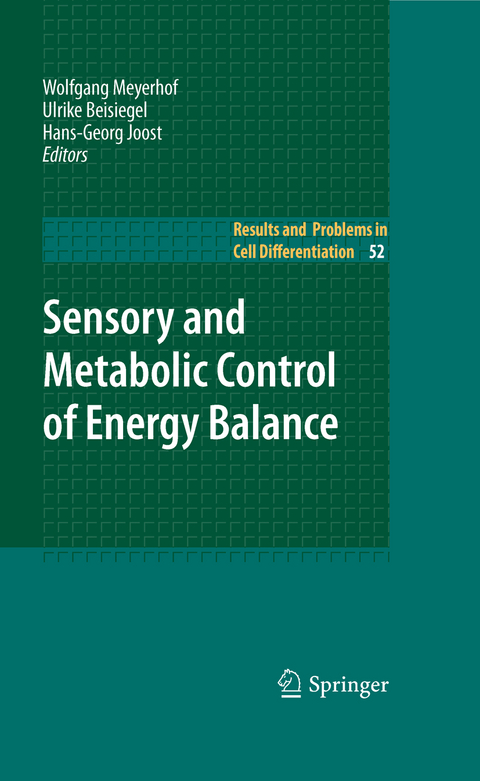Sensory and Metabolic Control of Energy Balance
Springer Berlin (Verlag)
978-3-642-14425-7 (ISBN)
During the last two decades, the prevalence of obesity has dramatically increased in western and westernized societies. Its devastating health consequences include hypertension, cardiovascular diseases, or diabetes and make obesity the second leading cause of unnecessary deaths in the USA. As a consequence, obesity has a strong negative impact on the public health care systems. Recently emerging scienti?c insight has helped understanding obesity as a complex chronic disease with multiple causes. A multileveled gene-environment interaction appears to involve a substantial number of susceptibility genes, as well as associations with low physical activity levels and intake of high-calorie, low-cost, foods. Unfor- nately, therapeutic options to prevent or cure this disease are extremely limited, posing an extraordinary challenge for today's biomedical research community. Obesity results from imbalanced energy metabolism leading to lipid storage. Only detailed understanding of the multiple molecular underpinnings of energy metabolism can provide the basis for future therapeutic options. Numerous aspects of obesity are currently studied, including the essential role of neural and endocrine control circuits, adaptive responses of catabolic and anabolic pathways, metabolic fuel sensors, regulation of appetite and satiation, sensory information processing, transcriptional control of metabolic processes, and the endocrine role of adipose tissue. These studies are predominantly fuelled by basic research on mammalian models or clinical studies, but these ?ndings were paralleled by important insights, which have emerged from studying invertebrate models.
The Genetic Basis of Obesity and Type 2 Diabetes: Lessons from the New Zealand Obese Mouse, a Polygenic Model of the Metabolic Syndrome.- Regulation of Nutrient Metabolism and Inflammation.- Lipid Storage in Large and Small Rat Adipocytes by Vesicle-Associated Glycosylphosphatidylinositol-Anchored Proteins.- Autophagy and Regulation of Lipid Metabolism.- Gene Co-Expression Modules and Type 2 Diabetes.- Role of Zinc Finger Transcription Factor Zfp69 in Body Fat Storage and Diabetes Susceptibility of Mice.- Metabolic Sensing in Brain Dopamine Systems.- Oral and Extraoral Bitter Taste Receptors.- Reciprocal Modulation of Sweet Taste by Leptin and Endocannabinoids.- Roles of Hormones in Taste Signaling.- Endocannabinoid Modulation in the Olfactory Epithelium.- The Olfactory Bulb: A Metabolic Sensor of Brain Insulin and Glucose Concentrations via a Voltage-Gated Potassium Channel.- Energy Homeostasis Regulation in Drosophila: A Lipocentric Perspective.- Towards Understanding Regulation of Energy Homeostasis by Ceramide Synthases.- Role of the Gut Peptide Glucose-Induced Insulinomimetic Peptide in Energy Balance.- Adipocyte-Brain: Crosstalk.
| Erscheint lt. Verlag | 24.9.2010 |
|---|---|
| Reihe/Serie | Results and Problems in Cell Differentiation |
| Zusatzinfo | VIII, 208 p. 42 illus., 30 illus. in color. |
| Verlagsort | Berlin |
| Sprache | englisch |
| Maße | 155 x 235 mm |
| Gewicht | 530 g |
| Themenwelt | Naturwissenschaften ► Biologie ► Mikrobiologie / Immunologie |
| Naturwissenschaften ► Biologie ► Zellbiologie | |
| Schlagworte | cellular mechanisms • Diabetes • Energy balance • homeostasis • Insulin • metabolic control • Metabolism • Obesity • Regulation • tissue |
| ISBN-10 | 3-642-14425-X / 364214425X |
| ISBN-13 | 978-3-642-14425-7 / 9783642144257 |
| Zustand | Neuware |
| Haben Sie eine Frage zum Produkt? |
aus dem Bereich




